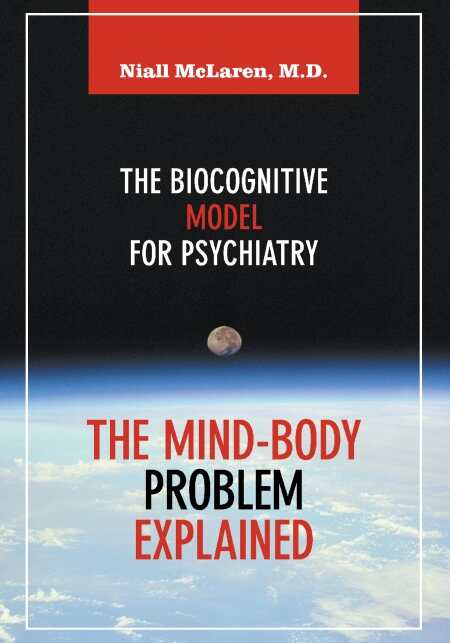The Mind-Body Problem Explained
The Biocognitive Model for Psychiatry
Australian doctor Niall McLaren’s no-holds-barred critique of psychiatry takes us through some of what he considers dubious and scientifically unsound theoretical underpinnings behind the practice of modern psychiatric medicine. In The Mind-Body Problem Explained, McLaren claims quite emphatically that oftentimes it’s not a case of psychiatric logic being too complex for the layman to grasp, it’s really just that the basic theoretical foundation (as well as its application) is not rigorous or complex enough.
With dramatic relish, McLaren challenges what he sees as defensive adherence to established theories passing for hard science. Not likely to be popular with the mainstream of psychiatric theorists, whom he sees as too closed-minded, McLaren’s insights could certainly at first glance appear controversial. However, it’s possible many psychiatric practitioners will nod wryly at many of his claims. McLaren says that many psychiatric patients who are prescribed psychoactive medications for supposed biological conditions—based on very cursory diagnosis—do in fact suffer from personality disorders which require a probing diagnosis coupled with a more traditional talk therapy (and “jollying along”) to treat.
Although it may at times be overly dense for most laypeople, this volume not only points out supposed defects in the profession but also proposes an alternative, theoretically grounded approach that outlines how the mind, mental illness, and personality disorders could actually work—in short, McLaren’s own biocognitive model. Above all, he prompts us to not underestimate the nuanced functionings of our consciousness.
Of special interest are the case studies from his practice where McLaren shares descriptions of patients whom he claims conventional diagnostic models misjudged. He puts forward instances of when he felt anxiety was misdiagnosed with ADHD, and when “overactivity driven by … a deep-seated fear of failure” was misdiagnosed as “mood swings and mania.” The author claims that an overly literal reading of current diagnostic models hurts many patients who, as a result, get funneled into categories that are quick and convenient to diagnose and expensive to treat. If this is true, then it follows that such misdagnosis and mistreatment must have very steep costs in terms of dollars squandered, not to mention in terms of wasted human potential and needless suffering.
McLaren advocates neither a strictly behaviorist nor biological approach to psychiatric practice. He believes that a too-strict behaviorist theory aligns mental processes too closely with the machine-like workings of the brain and that a purely biological methodology reduces the complex experience of consciousness too reductively. He posits that his biocognitive model combines the best elements of both and offers more depth and understanding than either of the others can. Under McLaren’s often bluff manner is an underpinning of intelligence, broad theoretical knowledge, and humane insight, all coupled with what comes across as an empathetic nature.
McLaren encourages us to “first do no harm” and then by moving from an over-literal reliance on the DSM (Diagnostic and Statistical Manual of Mental Disorders) and an overeagerness to prescribe too quickly and too often, (hopefully) do a great deal of good. His chagrin at conventional practice is not the battle-hardened cynicism of someone who’s seen it all and no longer could care less but that of an at-times curmudgeonly practitioner who would seem to have his patients’—and society’s— best interests at heart.
Reviewed by
Seamus Mullarkey
Disclosure: This article is not an endorsement, but a review. The publisher of this book provided free copies of the book and paid a small fee to have their book reviewed by a professional reviewer. Foreword Reviews and Clarion Reviews make no guarantee that the publisher will receive a positive review. Foreword Magazine, Inc. is disclosing this in accordance with the Federal Trade Commission’s 16 CFR, Part 255.

